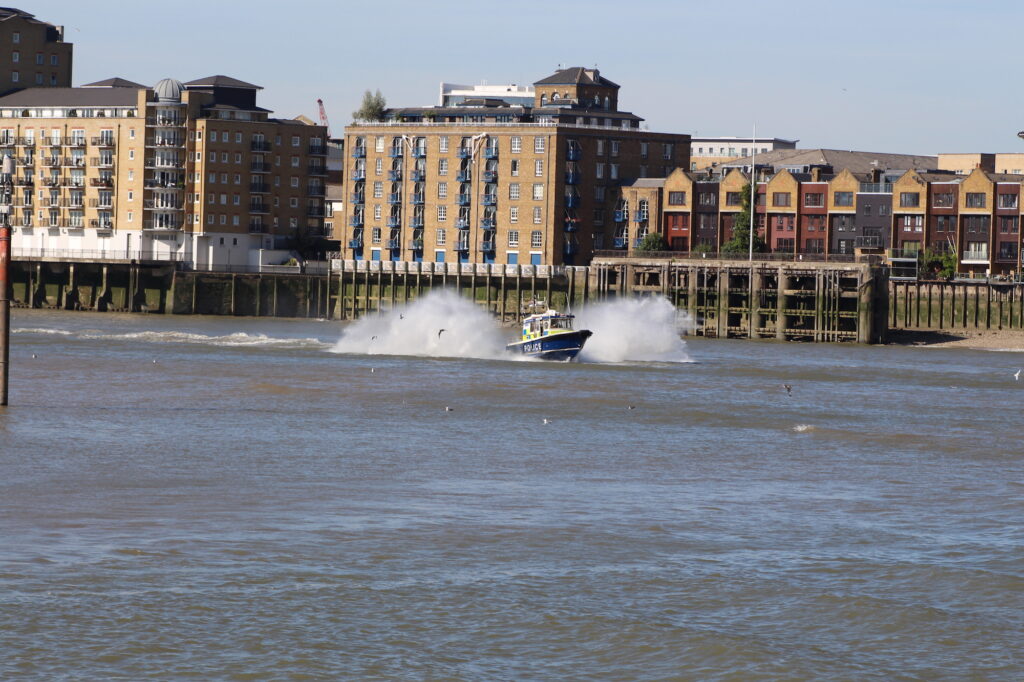Names of some first responder vessels on the central London Thames
From the names of the London Fire Brigade vessels that clearly mark their function; the Port of London patrol launches linked to geography of the river; the RNLI’s homage to benefactors inscribed on their lifeboats; through to the Thames River Police’s commemoration of their founders and past heroes, there is much to reflect upon as you walk by the river.
The London Fire Brigade has two fire boats moored at their Lambeth river station by Lambeth Bridge: FIRE DART and FIRE FLASH. And, as their names suggest, they are ready to arrive with great speed to deal both with fires in buildings facing the Thames and on boats, as well as “rescuing vessels that have got into trouble, towing distressed vessels, and rescuing people and animals from both water and mud.”
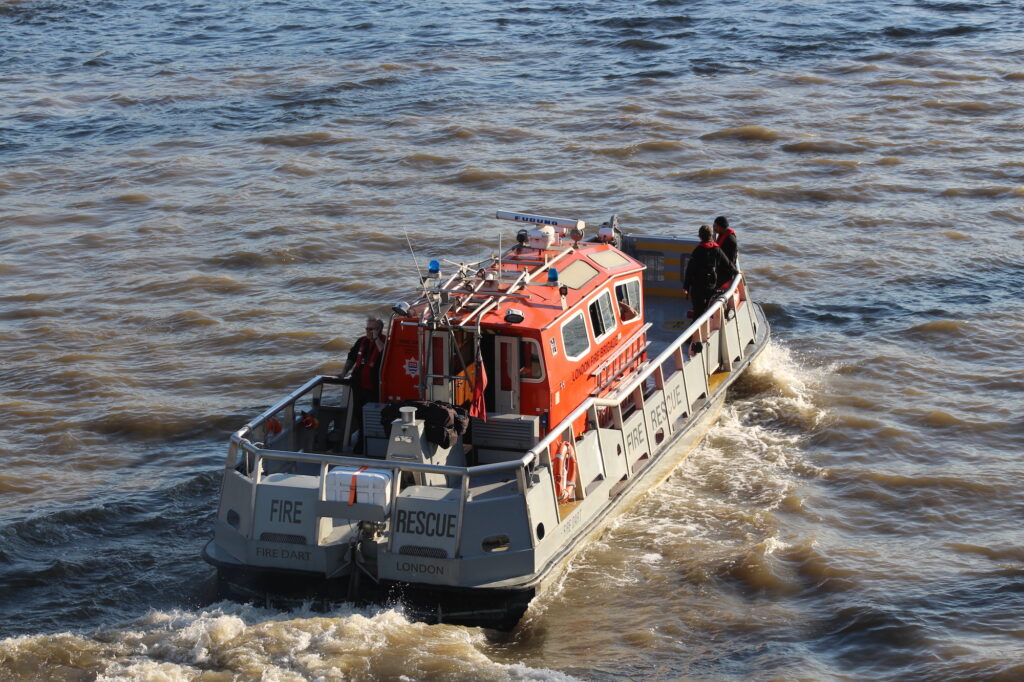
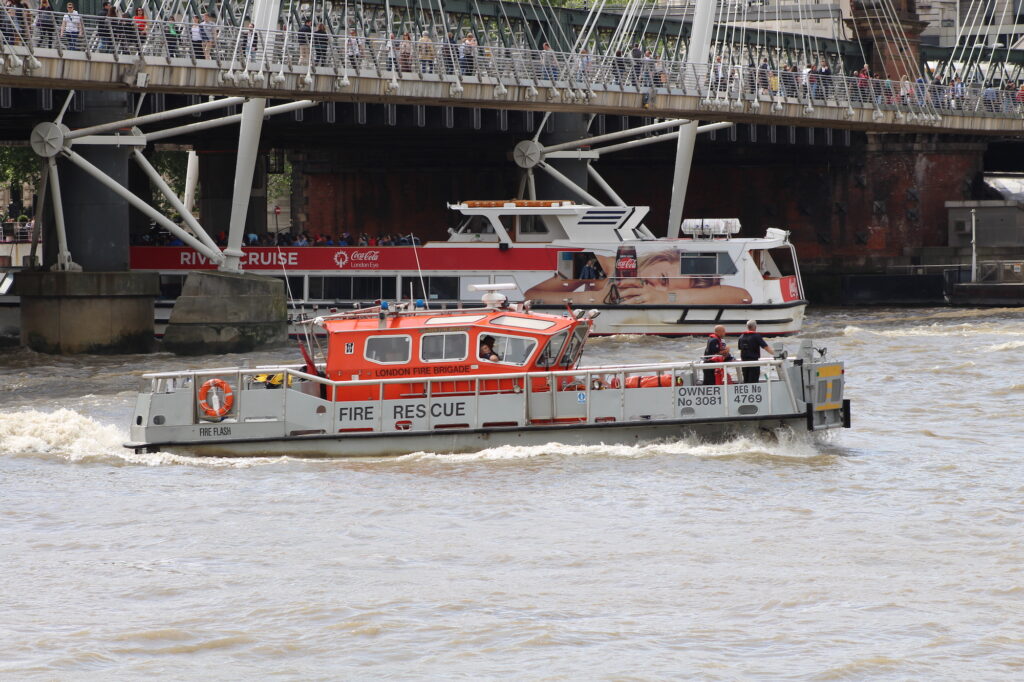
Among the many working vessels of the Port of London Authority there are four catamaran launches patrolling the stretch of the river from Putney Bridge to the North Sea. Simply named after Thames Bridges they are: BARNES, KEW, LAMBETH, and SOUTHWARK. Spotted from the embankment at Victoria Tower Gardens, the last two have been seen most frequently during lockdown.
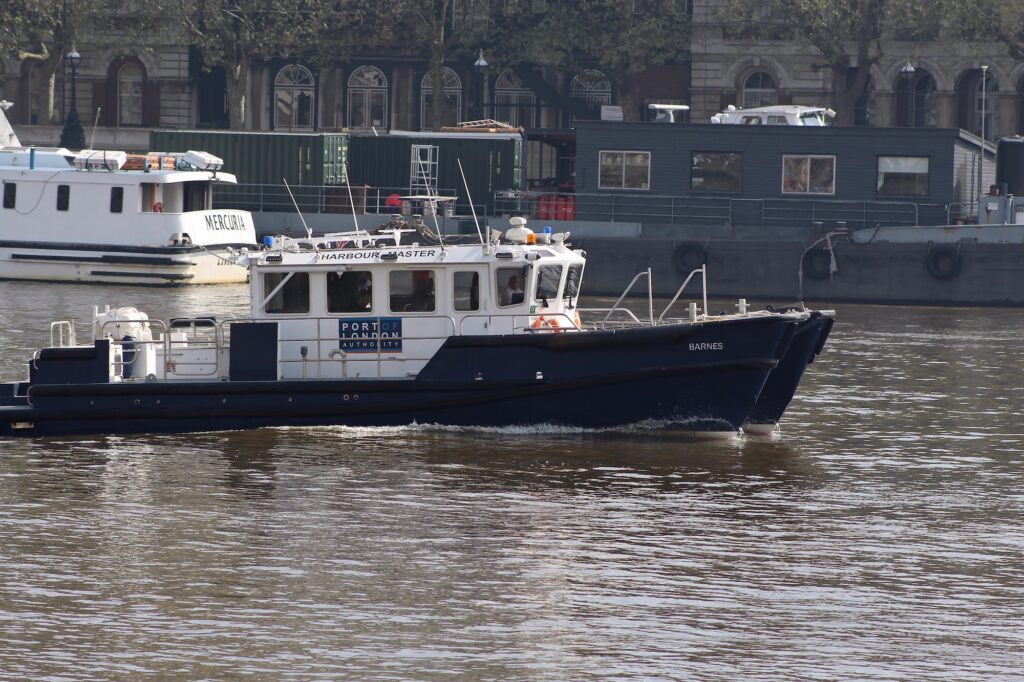
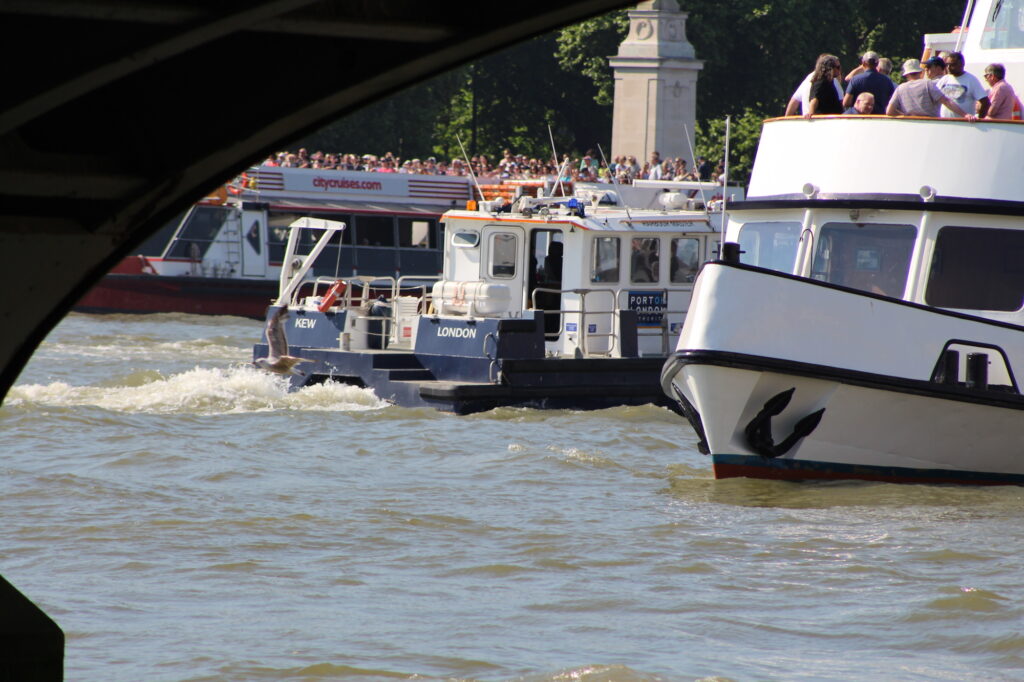
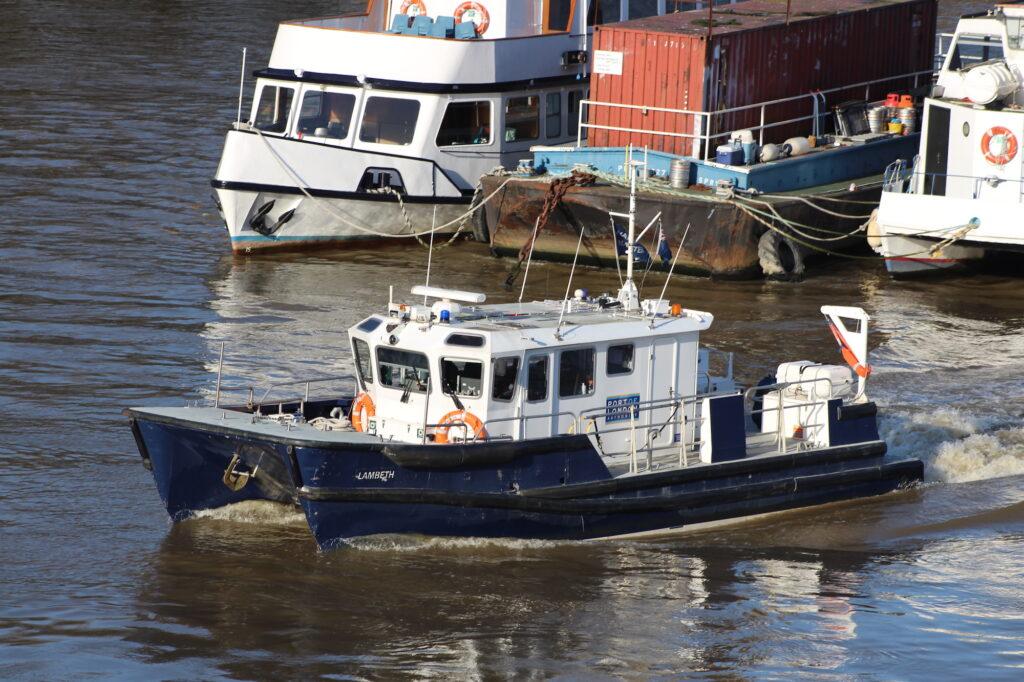
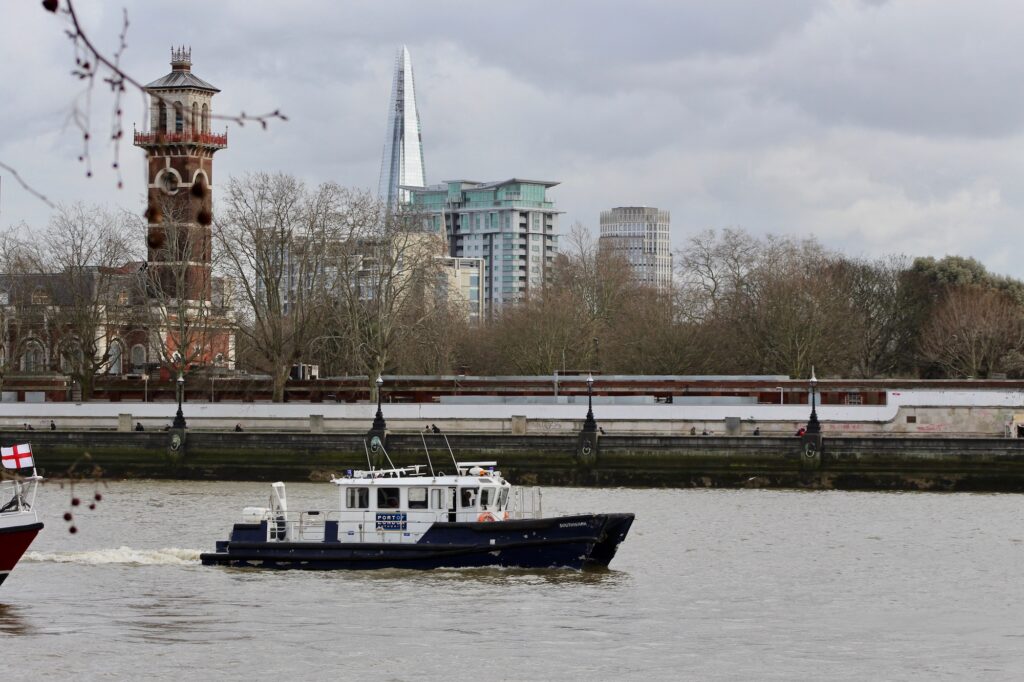
Eighteen years ago four permanent RNLI lifeboat stations were set up along the Thames at: Teddington, Chiswick, Tower Pier (now by Waterloo Bridge and known as ‘Tower’), and Gravesend. Their creation came after inquiries and reports into the tragic sinking of party boat the MARCHIONESS. Fifty-one young people were drowned on August 28, 1989, when the dredger BOWBELLE rammed and sank her near Southwark Bridge. The RNLI now have a twenty-four hour presence on the tidal Thames every day of the year and have saved many lives. Tower lifeboat station is the busiest in the country.
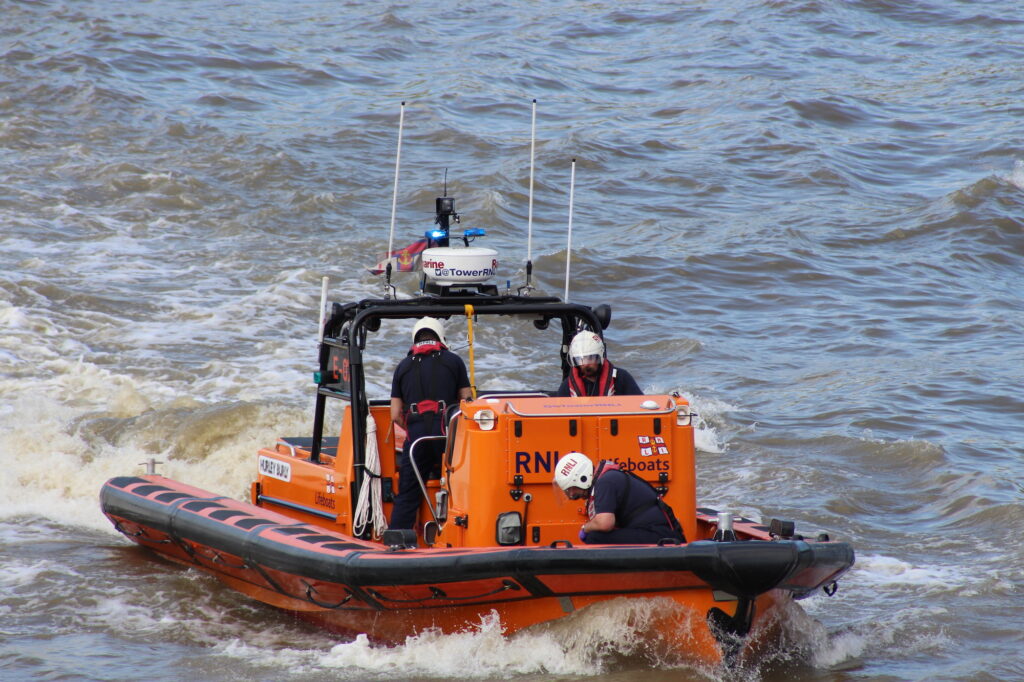
HURLEY BURLY was named at a ceremony on October 31, 2011, in honour of Kay Hurley MBE, 1918-2020, who funded the lifeboat and was a major benefactor of the RNLI.
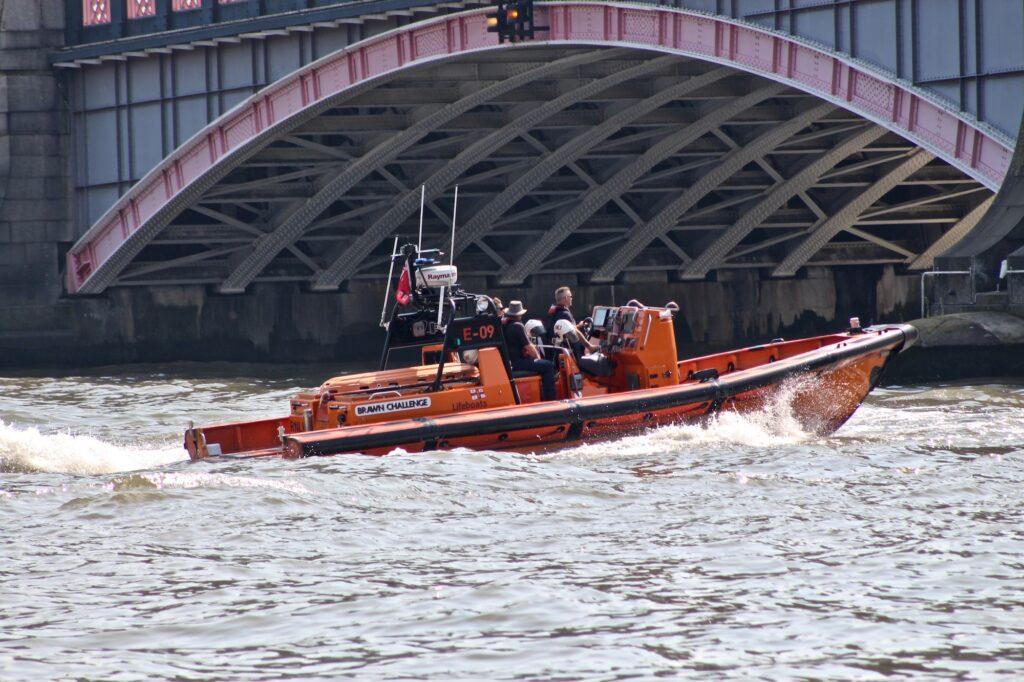
Chiswick Lifeboat, BRAWN CHALLENGE, was named in 2010 after Ross Brawn, OBE, engineer, and Formula One team principal, who initiated a massive fund-raising challenge to raise the £350,000 needed for the new lifeboat.
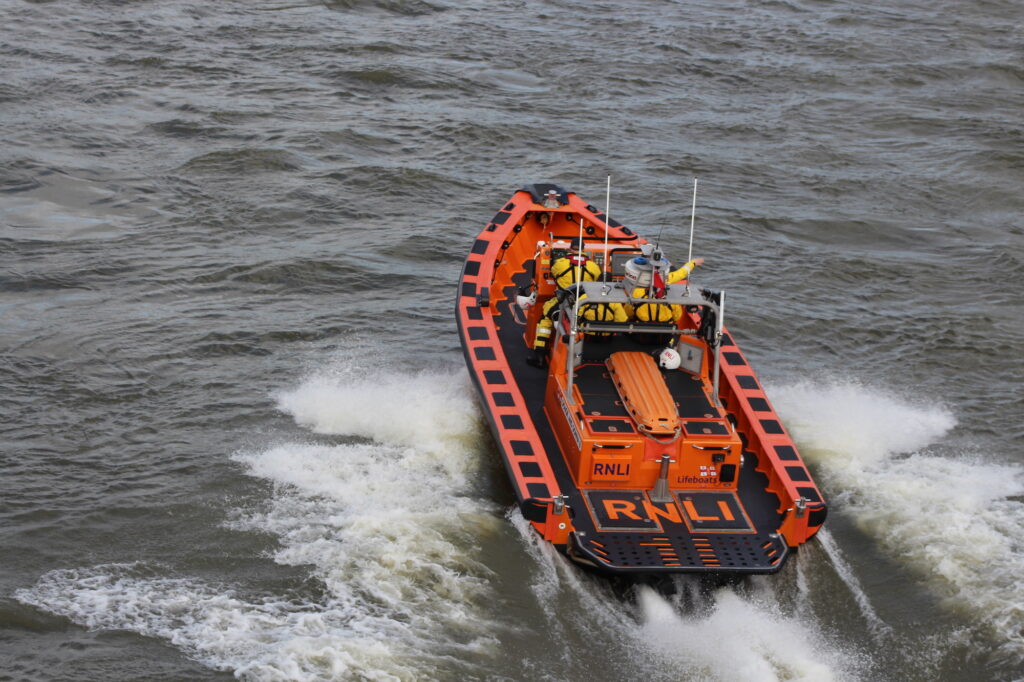
The lifeboat DONNA and DOUGIE B was named in 2012 by Olympic rower Greg Searle in honour of Douglas ‘Dougie’ and Rosemary ‘Donna’ Battams, who having had no children, decided to leave money in their will to the RNLI. They had a strong association with the sea as Dougie had been in the Merchant Navy for many years before coming to work on the Thames for the Port of London Authority.
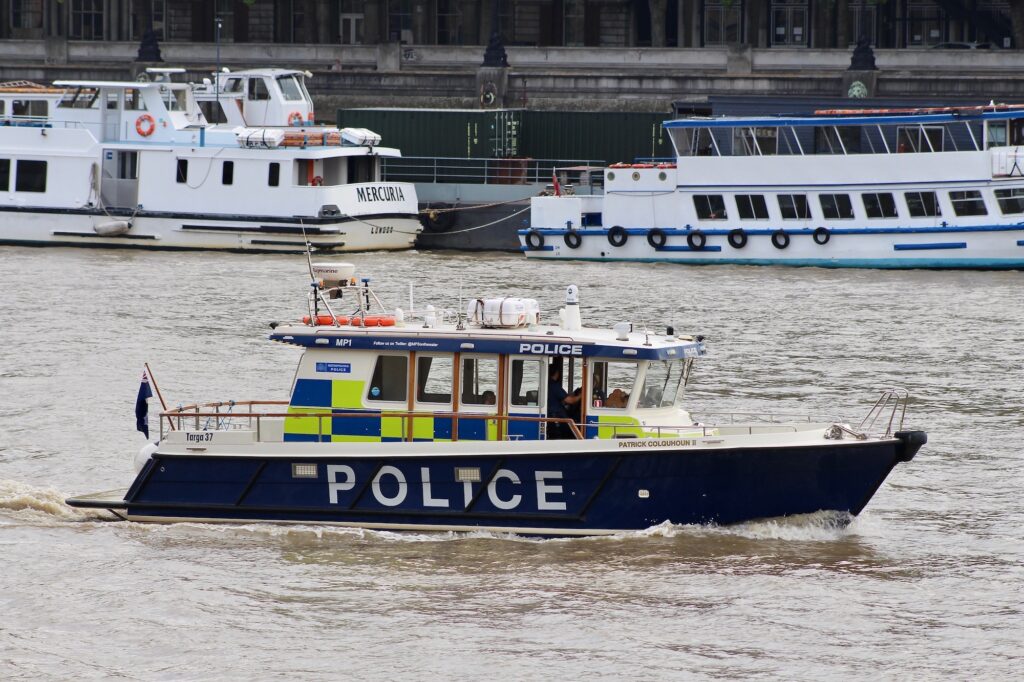
The introduction to the Thames Police Museum at Wapping, explains that “The Thames River Police was the first policing body ever to be set up. Its sole objective was the prevention and detection of crime on the Thames and it was to become the forerunner of many other police forces throughout the world.” The Thames River Police force was set up in 1798 by Patrick Colquhoun and John Harriott to counter the quite staggering amount of thieving that went on with impunity in and around the crowded London docks, causing great losses to importers and tax authorities alike. Some years later in 1839, the force, renamed the Thames Division, was amalgamated with London’s Metropolitan Police force, which had been created by Sir Robert Peel ten years earlier.
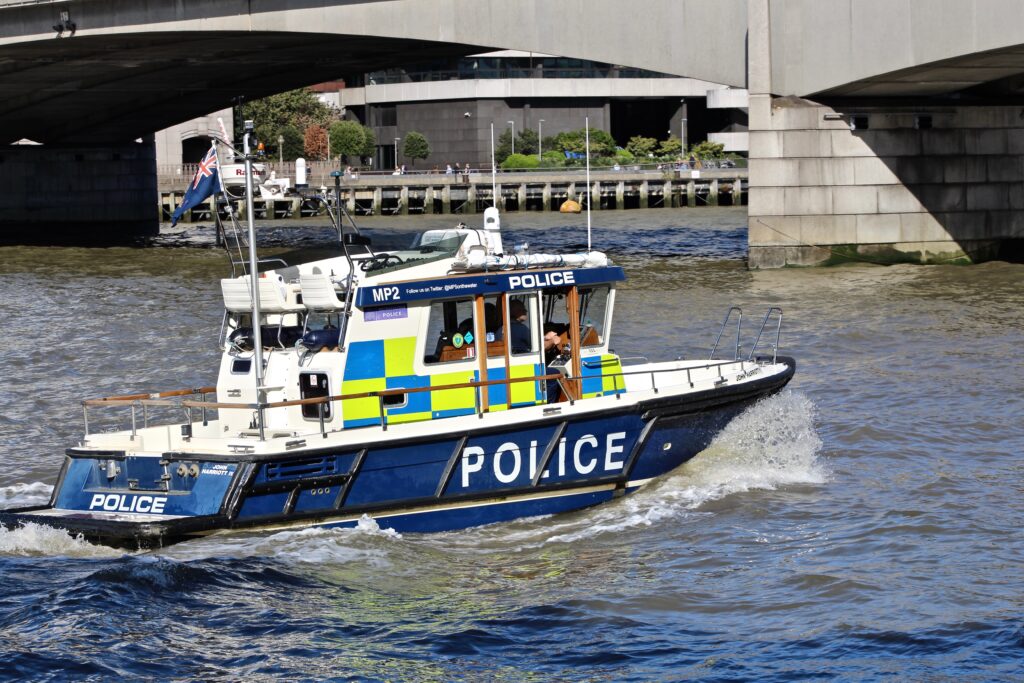
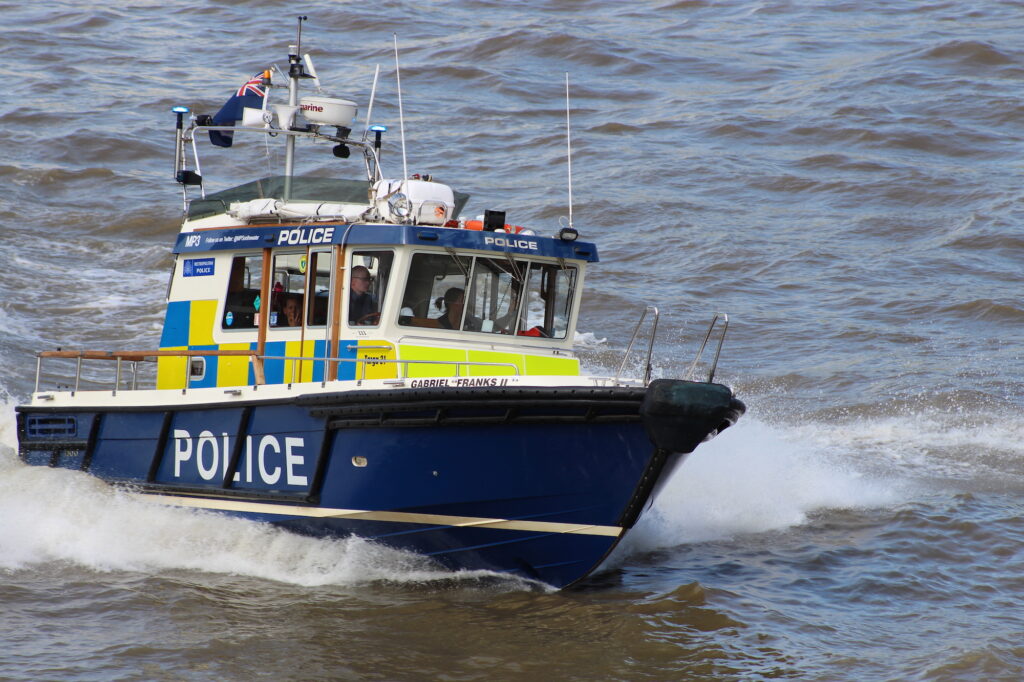
Gabriel Franks was the first British police officer to die on duty. He was employed by the Marine Police Office and was hit by a bullet while observing events during the Wapping Coal Riot in October 1798. He died a few days later. His memory is kept alive on the modern vessel named after him in the fleet of the Metropolitan Police Service Marine Policing Unit, as the service is now known.
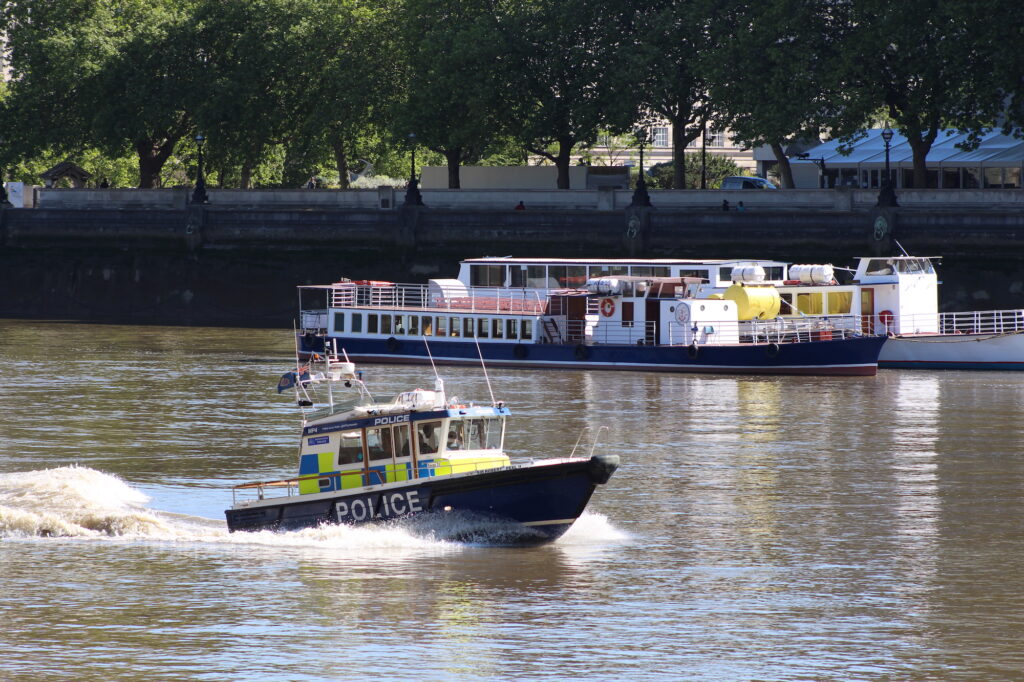
After becoming Home Secretary in 1822, Sir Robert Peel oversaw prison reform and introduced wide ranging changes to British criminal law. In 1829 he saw through the Metropolitan Police Act, which set up the official police force for London. There is a fine model of the first launch (in service from 1947 – 1963) to bear the name SIR ROBERT PEEL in the Thames Police Museum.
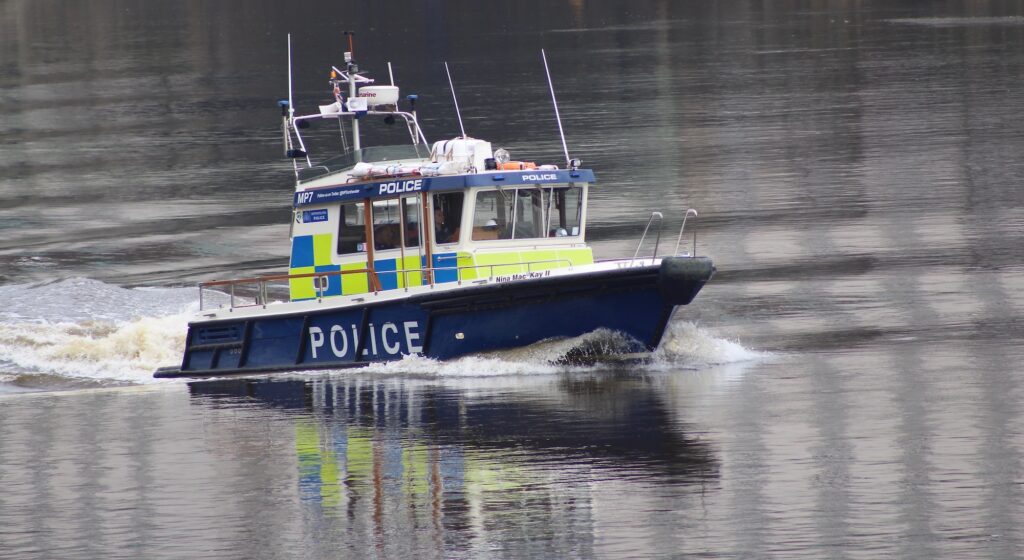
Seen frequently patrolling the Thames is the MPS Marine Policing Unit launch, named in honour of PC Nina Mackay, aged twenty-five, who was fatally stabbed while arresting a man on October 24, 1997. There is a Memorial to her in East London where she fell but memory of her is kept in the public consciousness as the boat bearing her name frequently passes through central London on patrol.
As well as direct references to geographical or functional links, innovators, philanthropists and heroes have been remembered in the naming of boats that form an essential lifeline along the tidal Thames. I have only touched upon a few of them here but perhaps enough to awaken your curiosity as they pass by, serving Londoners and visitors alike.
Further information
London Fire Brigade
Port of London Authority patrol launches
RNLI on the Thames
Thames River Police Museum
You can also follow @LondonFire @LondonPortAuth @Londonlifeboats on Twitter.
